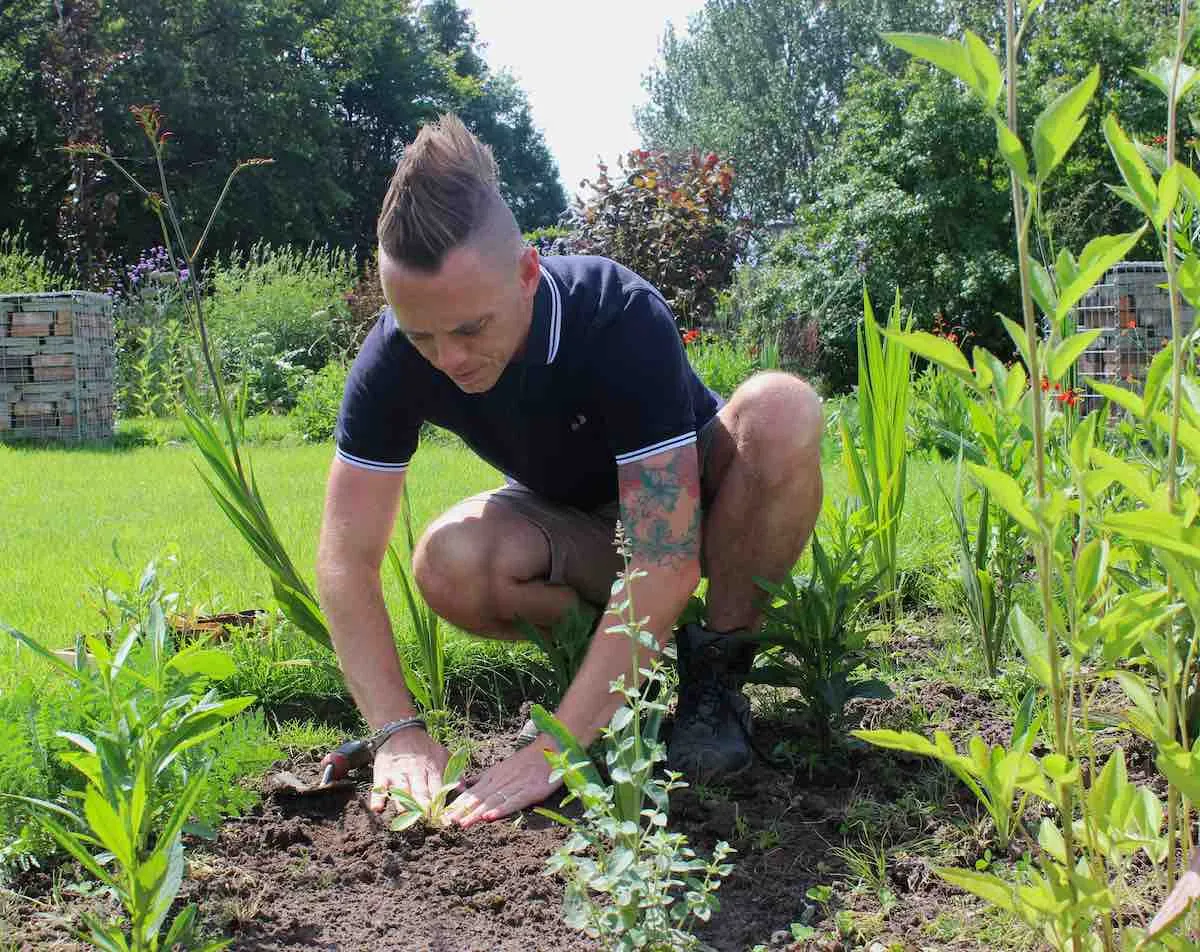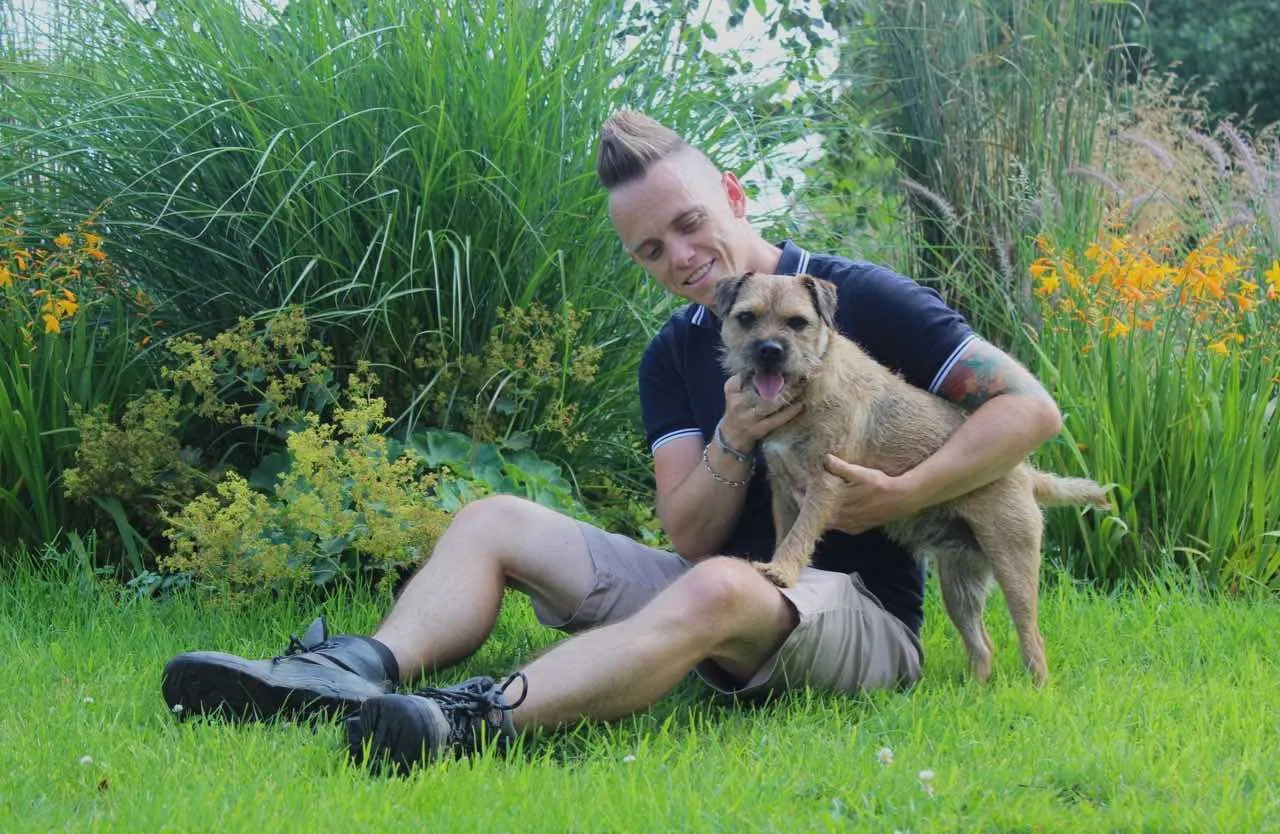Hi @tankboy74
With any new plant, you want to avoid planting in frost, heavy downpours or heatwaves. Usually, these are the exception, but with the current climate crisis, we are seeing more and more of these freak weather conditions.
You'd be surprised how tough perennials, trees and shrubs are though. You don't need to totally baby sit them and as long as its not icy or crazy hot it's just best to get the plants into the ground ASAP. I would avoid keeping them indoors with central heating as it confuses them in thinking its summer when it isn't and can throw the plants out of season.
I'd pop the witchhazel some where sheltered outside until you can plant it. I wouldn't put it under glass as it will confuse it. Then plant once the weather is a bit nicer!
For other Ninjas, here are some additional tips on what to do if you're trying to plant when there are frosts or heat waves!
How to plant during frost or a headwave to protect plants
Protecting new plants from frost or a heatwave before planting them in the garden requires some preparation and care. Here's how you can do it:
-
Choose Suitable Planting Time: Before purchasing new plants, research the average last frost date in your area or heat wave. Aim to purchase plants after this date or when the weather is consistently warmer to reduce the risk of frost damage.
-
Keep Plants Under Glass or a Cold Garage: If you've already purchased new plants but are waiting to plant them outdoors, keep them indoors in a sheltered location such as a garage, shed, or greenhouse. This protects them from frost or heat until the weather improves.
-
Provide Adequate Shelter: If keeping plants indoors isn't feasible, provide temporary shelter for them outdoors. Place them against a south-facing wall or under a covered porch where they are shielded from frost and harsh winds.
-
Use Protective Coverings: Cover the plants with frost cloths, old blankets, or burlap sacks to provide insulation and protection from freezing temperatures. Ensure that the covers are secured loosely to prevent damage to the plants.
-
Water Plants Appropriately: Keep the soil around the plant moist but not waterlogged. Moist soil retains heat better and can help protect plant roots from frost damage. Water the plants early in the day to allow excess moisture to evaporate before nighttime temperatures drop. Put the plants on watering trays in the example of a heat wave.
- Monitor Weather Forecasts: Stay informed about weather forecasts in your area, especially during the spring when frost is still a concern. Cover plants with protective materials when frost is predicted, and remove covers during the day when temperatures rise.
I hope that helps!
Lee Garden Ninja
Hi @tankboy74
With any new plant, you want to avoid planting in frost, heavy downpours or heatwaves. Usually, these are the exception, but with the current climate crisis, we are seeing more and more of these freak weather conditions.
You'd be surprised how tough perennials, trees and shrubs are though. You don't need to totally baby sit them and as long as its not icy or crazy hot it's just best to get the plants into the ground ASAP. I would avoid keeping them indoors with central heating as it confuses them in thinking its summer when it isn't and can throw the plants out of season.
I'd pop the witchhazel some where sheltered outside until you can plant it. I wouldn't put it under glass as it will confuse it. Then plant once the weather is a bit nicer!
For other Ninjas, here are some additional tips on what to do if you're trying to plant when there are frosts or heat waves!
How to plant during frost or a headwave to protect plants
Protecting new plants from frost or a heatwave before planting them in the garden requires some preparation and care. Here's how you can do it:
-
Choose Suitable Planting Time: Before purchasing new plants, research the average last frost date in your area or heat wave. Aim to purchase plants after this date or when the weather is consistently warmer to reduce the risk of frost damage.
-
Keep Plants Under Glass or a Cold Garage: If you've already purchased new plants but are waiting to plant them outdoors, keep them indoors in a sheltered location such as a garage, shed, or greenhouse. This protects them from frost or heat until the weather improves.
-
Provide Adequate Shelter: If keeping plants indoors isn't feasible, provide temporary shelter for them outdoors. Place them against a south-facing wall or under a covered porch where they are shielded from frost and harsh winds.
-
Use Protective Coverings: Cover the plants with frost cloths, old blankets, or burlap sacks to provide insulation and protection from freezing temperatures. Ensure that the covers are secured loosely to prevent damage to the plants.
-
Water Plants Appropriately: Keep the soil around the plant moist but not waterlogged. Moist soil retains heat better and can help protect plant roots from frost damage. Water the plants early in the day to allow excess moisture to evaporate before nighttime temperatures drop. Put the plants on watering trays in the example of a heat wave.
- Monitor Weather Forecasts: Stay informed about weather forecasts in your area, especially during the spring when frost is still a concern. Cover plants with protective materials when frost is predicted, and remove covers during the day when temperatures rise.
I hope that helps!
Lee Garden Ninja
 Lee Burkhill: Award Winning Designer & BBC 1's Garden Rescue Presenters Official Blog
Lee Burkhill: Award Winning Designer & BBC 1's Garden Rescue Presenters Official Blog



